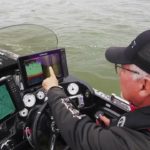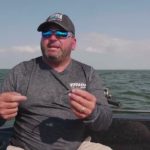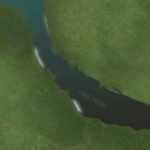Early Fall Walleye Tactics
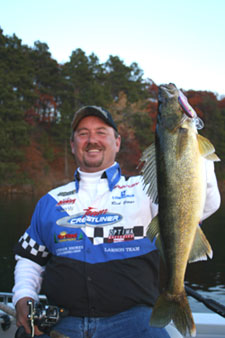
Big changes are coming which can be a real good thing if you’re a walleye angler. It all starts when schools of walleyes that have been living large on deeper summer haunts pack it up and make a major change in location and start showing up on shallower structure like rock and gravel reefs, as well as weed covered flats. Even before the infamous fall turnover stirs things up and sets walleyes on their ears, hot patterns start to set up that are largely overlooked.
They’re overlooked because many anglers have already turned their attention toward other endeavors (like the upcoming hunting season), or because a genuine lack of success has damped their spirits, enough so that they’ve thrown in the towel. By the end of August and on into September there is a short period of time when walleyes show a renewed interest in shallow water, which can result in some excellent angling opportunities. For those that decide to stick with it the potential is real, and in many cases the early fall period can produce some of the hottest action of the entire open water season.
The big draw for attracting numbers of walleyes back to shallow water is more than just the structure itself and can be summed up in one word; food. For most of the summer young of the year perch, minnows, and baitfish hangout in the relative safety of shallow water structure where they can live and grow until they become a desirable size. Reaching a desirable size can be a dangerous thing if you’re a minnow, as there are only so many places to hide. Shallow rock and gravel has plenty to offer, providing hiding places for all of that aforementioned bait as well as thousands of crayfish. Adult perch will file in and gorge themselves on immature crayfish making them an easy target for walleyes on the prowl.
On lakes that have big weed flats there are all kinds of nooks and crannies for bait fish to hide out in, that is until late in the summer when a lot of weeds start to lay down and die, thus eliminating many of those hiding spots and pushing schools of bait out into the open leaving them in a rather precarious position.
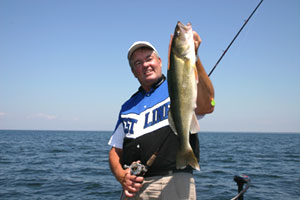
Walleyes know a good situation when they see one and big schools of bait left hanging out to dry is a real good situation. It all happens at a time when predators instinctively feel the need to feed heavily, allowing them put on the layers of fat that will help to get them through the leaner times of the hard water period.
One of the hottest patterns of the early fall period occurs near the remaining weeds that are left standing on slow tapering flats, and can happen just about anywhere you find green weeds. Walleyes will stack up on the edges or move into the middle of a flat if there are enough openings. The edges and openings create ambush points and give ol’ marble eyes some room to operate.
Team Crestliner member Richie Boggs of Nisswa Minnesota likes to pitch crank baits over the tops of heavy weed beds; “You’d be surprised by how many fish you can catch by burning a crankbait like a #5 or #7 Shad Rap through the weeds. The pattern is particularly effective when you have some wind and waves blowing into a weed flat. It’s also a great way to catch bigger fish!”
Another top presentations for working early fall weed flats include live bait rigging and jigging. A live bait rig and a red tail chub can be a real killer when worked on the deep edge of a weed flat, but the presentation loses some appeal when trying to work into the middle of heavier weeds.
In that case a jig tipped with either a minnow or plastic tail like a 3″ Northland Tackle Slurpies Swim Shiner may be more effective as you can literally rip the setup through the weeds which can trigger weedy walleyes. The jig can be cast or trolled depending on how much area you have to cover, or how thick the weeds are.
It’s time to get back in the saddle and give early fall walleyes a try. They’re there, they’re hungry, and they can be caught, and it might as well be by you or me. See you on the water.


